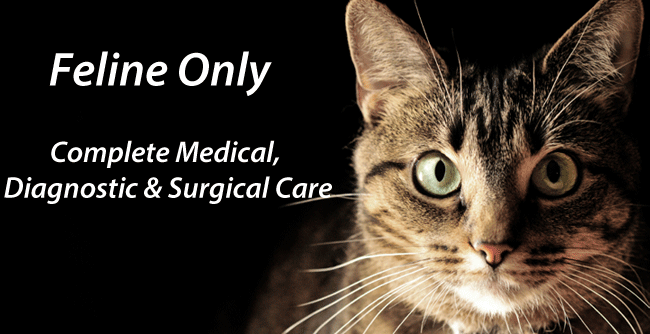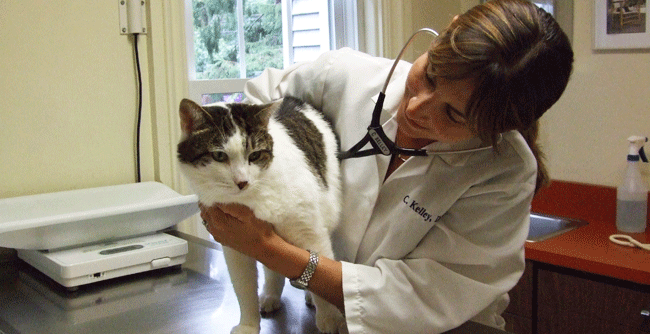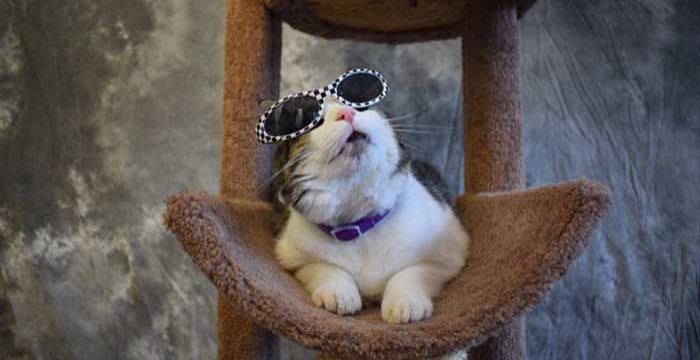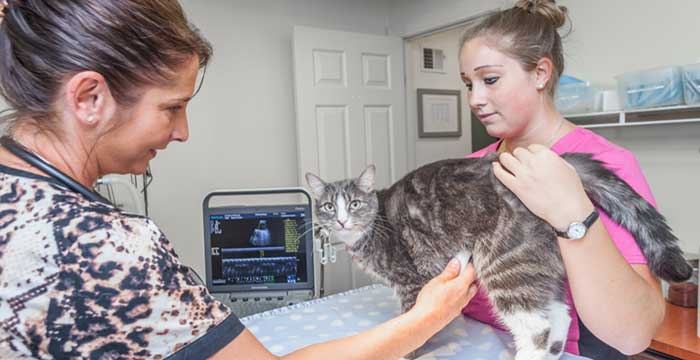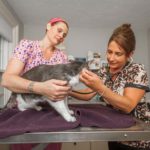
Entering the Animal Hospital
Ever wonder what all the people racing around your animal hospital are doing? What is the veterinarian looking for in my cat’s mouth? I can remember going to the animal hospital visit when I was small and trying to make sense of everything that was going on in this tiny office full of barking dogs and crying cats. Luckily, we have no barking dogs at the Cat Clinic of Plymouth so things are less hectic feeling.
Well, the first person that you meet might seem to have the most obvious job. The veterinary receptionist will great you and let the rest of the staff know you arrived. They confirm you and your cats information and find out any other information that the rest of the staff might need to know before the appointment begins including new medical history, medical concerns or how your cat seems today. That receptionist takes care of this while also answering sometimes complex veterinary questions via telephone, email and social media. They stay very busy!
Preparing for the Veterinary Exam
Once the receptionist informs the veterinary technician or their assistant, the veterinary technician will again familiarize themselves with your pet and prepare the room to make sure that it is clean and comfy. One in the exam room, the veterinary technician will take a history of basic husbandry questions plus changes in medical history since the last appointment as well as any new medical or behavioral concerns for the veterinarian. We will usually open the carrier and allow your cat to comfortably patrol the exam room of the animal hospital and get comfortable with the new space. Sometimes with a more nervous patient that gets defensive if over stimulated, we will allow them to relax in their own space within their carrier. (See How to get your cat to LOVE its carrier). Eventually, we will ask the patient to step out of their cat carrier. We avoid pulling or dumping them from their carrier if at all possible. If there is a top door or if the top half of the cat carrier can be removed we will use that option sometimes performing the entire exam in the safety of the bottom of the carrier if at all possible. If appropriate the veterinary technician will collect a basic health assessment including heart rate, respiratory rate, temperature and blood pressure.
At that point, the veterinary technician confers with the veterinarian allowing the veterinarian to reexamine the cat’s chart in light of any new information that the veterinary technician has discovered during the conversation with you or assessing your cat including prior examinations or treatment plans, prior blood results or radiographs or the new medical history that was provided.
The Preventative Care Exam
The veterinarian then enters the room and hopefully after some pleasantries with you and your feline fur baby, the exam begins. Every veterinarian has their own systematic approach to the exam so that no body system goes unexamined. My exam begins when the patient is exploring the exam room. I watch how they are getting around. Do they get around comfortably? Are there any signs of pain or lameness? I also take note of their attitude and body language. Sometimes I will spend some time on the floor with them before moving them to the exam table.
After some chin scratches and some treats for the patient if appropriate, I usually start with the cat’s head. At this point, I am looking for obvious abnormalities like dirty ears, cloudy eyes, oral disease and enlarged lymph nodes that may require further investigation. Continuing down the body, I stop to check the neck and chest again for enlargements especially of lymph nodes or thyroid glands all the while trying to get more specific information about the issues that were brought to the veterinary technician’s attention. With my stethoscope safely plugged into my ears, I then listen for heart sounds. This is usually when my client wants to start a story. So between the cats growling, purring, breathing and the client talking, I listen to the heart for specific heart sounds, beat abnormalities and heart rate. I then turn my attention to the breath sounds of the cat, they should be relatively quiet and at a normal rate.
Once the stethoscope is off I palpate the abdomen of the cat looking for a normal sized liver, spleen and bladder. Once these are identified, I concentrate on the intestines feeling for masses, thickenings, amount and consistency of stool in the colon. Finally, I run my hands over the entire body of the cat looking for lumps and bumps and health of the skin and coat. At this point, I will investigate more intensely any areas of concern found on initial veterinary exam. This may include looking at the ear canal with an otoscope or looking at the eyes with a ophthalmoscope.
Preventative Care Plan
Hopefully there are no abnormalities and we can administer preventative vaccinations or draw blood for preventative lab work. If there is an abnormality after discussing with the client, the veterinarian and veterinary technician come up with a diagnostic or treatment plan that the technician can then explain to the owner. If everyone is in agreement, we proceed with the plan. The technicians and veterinarians work together to set up what is needed so that when the patient is ready, we efficiently work through the punch list attempting to decrease stress to the client and the cat.
Veterinary Medical Record Documentation
Once the appointment is concluded, the veterinary technician and veterinarian make sure that all of the exam findings and discussions are noted within the medical record as well as all of the treatments or diagnostics that have been suggested. The clients are walked back to the receptionist to make their next appointment and receive any necessary documents.
So while what I have described here is the protocol of the Cat Clinic of Plymouth and other animal hospitals may have slightly different takes, the basic idea is fairly universal. As always I encourage my clients to ask questions and raise concerns at any point of this process. We are here to be a health advocate for your special fur baby. As their health care proxy, you must be just as comfortable with your experience at the veterinary hospital.
To schedule an appointment for your cat, Contact Us
By Cassandra Kelley DVM, veterinarian and owner Cat Clinic of Plymouth
